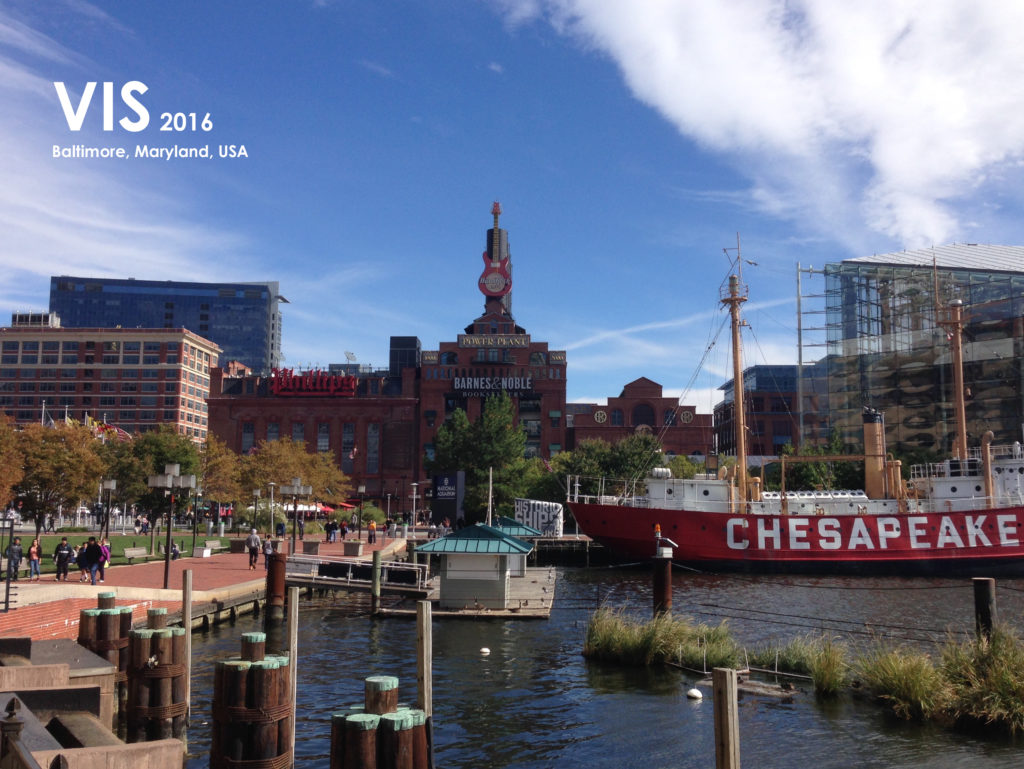This year, the IEEE VIS conference took part in Baltimore, Maryland which is also dubbed ‘Charm City’ by the locals. The conference was held in the Baltimore Convention Center, at the Hilton Hotel. The location is situated not far from the Inner Harbor of Baltimore, a very nice and scenic place. The conference consists of three tracks (InfoVis, SciVis & VAST). Additionally, there are many workshops and tutorials.

The this year’s conference keynote was delivered by Ricardo Hausmann, from Harvard’s Center for International Development. He gave a thought provoking talk about how technological advances are connected to the rise and power of nations.
Several people from the SFB-TRR 161 visited the conference and shared their work with the visualization community:
In the VAST track on Tuesday, Michael Behrisch presented the work on Magnostics, which allows for an Image-based search of interesting matrix views for guided network exploration, and on Wednesday Christoph Schulz gave a talk on Probabilistic Graph Layout for Uncertain Network Visualization, within the graphs session of the InfoVis track.
In addition to the talks, there was a rich program ranging from art exhibitions to poster sessions in the evening, which also featured local beer and snacks. After the official parts of the conference, usually the conversations were continued in one of the local bars. This allowed the participants to talk with each other in a more informal setting. The conference was closed on Friday with the capstone address by Jean-luc Doumont, who gave an inspiring presentation on the art of communicating scientific results. His advice ranged from structuring papers to decluttering presentations to get the main points across.
Next year, the VIS conference will be hosted in Phoenix, Arizona.

